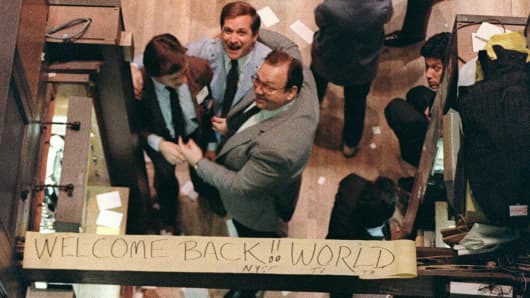What would be the equivalent drop today to the Dow's 508-point plunge on Black Monday? The index would have to drop more than 3,000 points today to match the 22.6 percent decline on Oct. 19, 1987.
While a drop of that magnitude is theoretically still possible today, in reality, the feat would be much more difficult to pull off due to circuit breaker rules that were initially developed in response to the 1987 crash.
Circuit breakers, which halt trading for a pre-determined period of time when the Dow experiences a severe selloff, have only been triggered twice since they were implemented (two times on Oct. 27, 1997). At that time, however, circuit breakers were based on 350- and 550-point declines in the Dow.
Since then, the guidelines were refined in 1998, only putting circuit breakers in effect on 10-percent, 20-percent and 30-percent drops in the Dow. The rules continue to evolve.
In response to the events of the May 2010 "Flash Crash," the Securities and Exchanged Commission recently passed new regulations that would base circuit breaker thresholds on 7-percent, 13-percent and 20-percent declines in the S&P 500. Those changes shorten the duration of the trading halts, and create trading limits for individual stocks under certain circumstances. The new rules will be tried out in a one-year pilot program that begins on Feb. 4.
-By Robert Hum, CNBC Markets Producer
bythenumbers.cnbc.com




